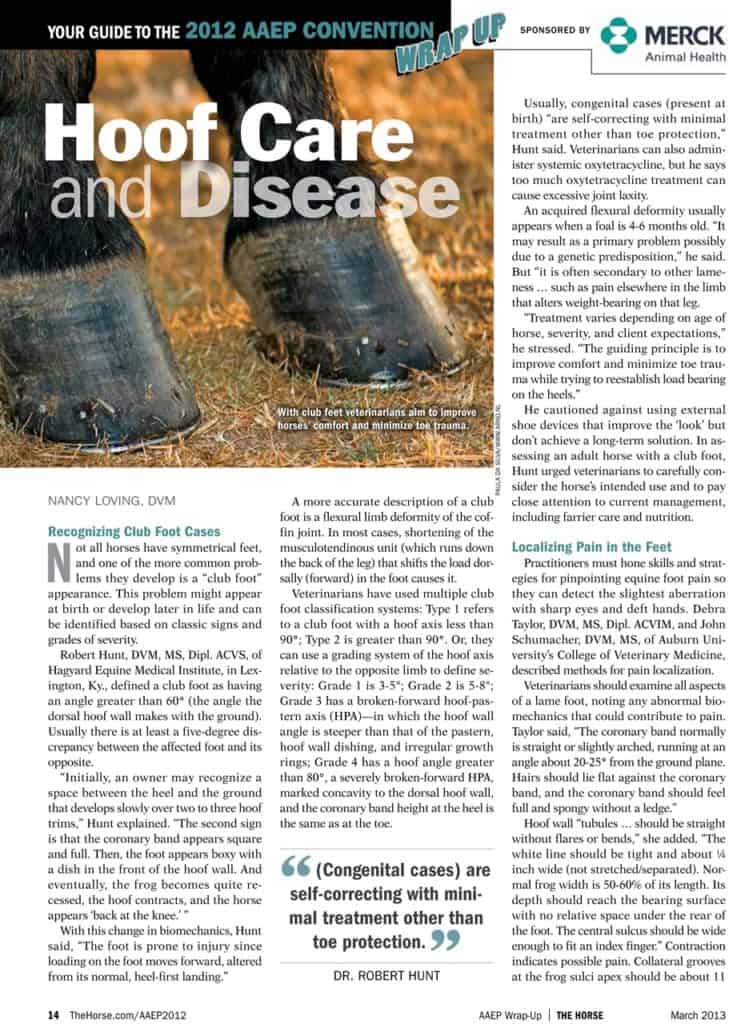
Hoof Care and Disease (AAEP Convention 2012)
Learn about club feet, localizing pain, hoof biomechanics, and the role radiographs play in farriery.
Prevention and treatment for problems of the equine foot

Learn about club feet, localizing pain, hoof biomechanics, and the role radiographs play in farriery.
The Grayson-Jockey Club Research Foundation approved funding of 12 new projects in 2013.

Veterinarians and farriers must work as a team to manage a horse’s athletic soundness and performance.

Laminitis is a devastating disease that does not discriminate based on a horse’s age, breed, or discipline.

Research shows that various angles of the outer and inner hoof are linked to different kinds of lameness.

A team evaluated a possible association between distal border fragments of the navicular bone and lameness.

Dr. Debra Taylor shares some points to consider when transitioning horses from being shod to going barefoot during the 2013 Western Veterinary Conference in Las Vegas, Nev.

Penetrating injuries can have serious consequences for horses, but vets are well-versed in handling them.

Researchers recently evaluated adult progenitor cell characteristics from healthy and laminitic horse hooves.

Experts answered reader questions live about what’s new in laminitis research and treatments.

Non-weight-bearing lameness is one of the most common emergencies practitioners manage in the field.

Equine metabolic syndrome can put pregnant mares in an especially precarious in situation.

Horse owners and veterinarians can identify a club foot based on classic signs and grades of severity.

One vet says radiographs can help in assessing a horse’s feet and developing a plan to maximize soundness.

Owners of laminitic horses can speak with their veterinarian about registering to be included in the study.
The event will feature an educational speaker series for parents, novice horse owners, and advanced horsemen.
Stay on top of the most recent Horse Health news with
"*" indicates required fields